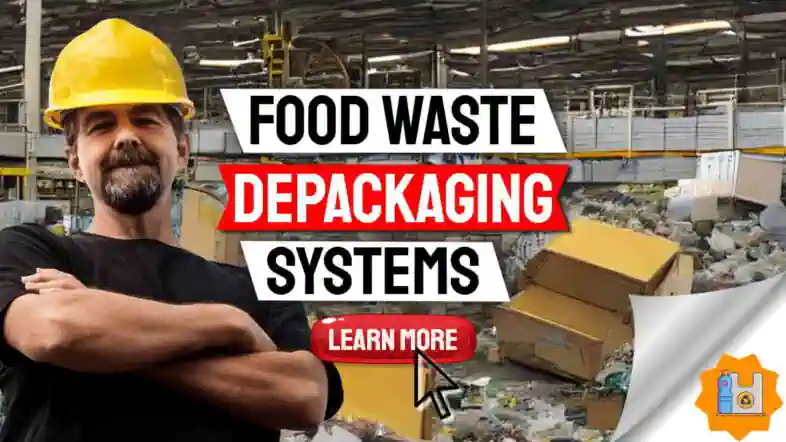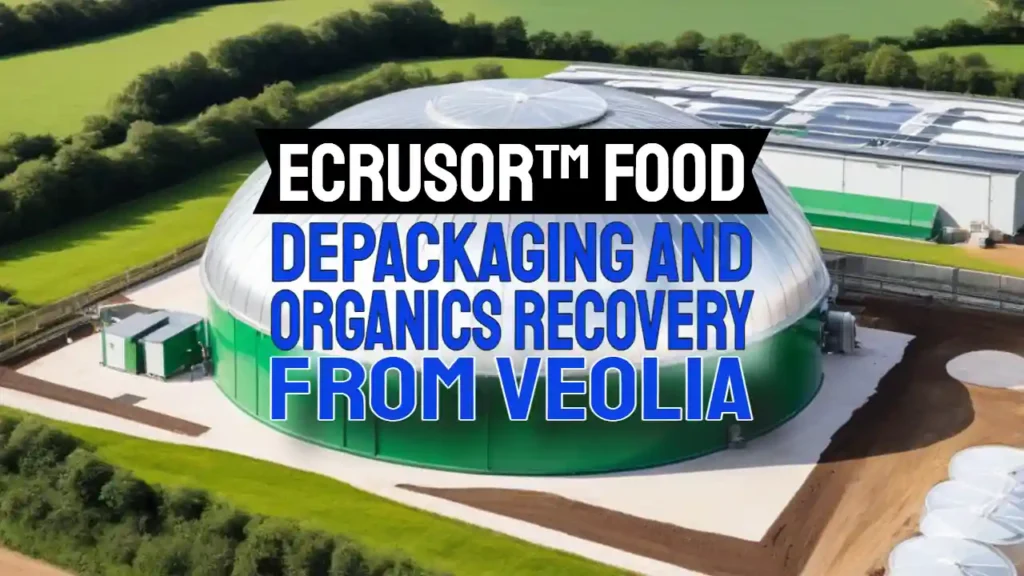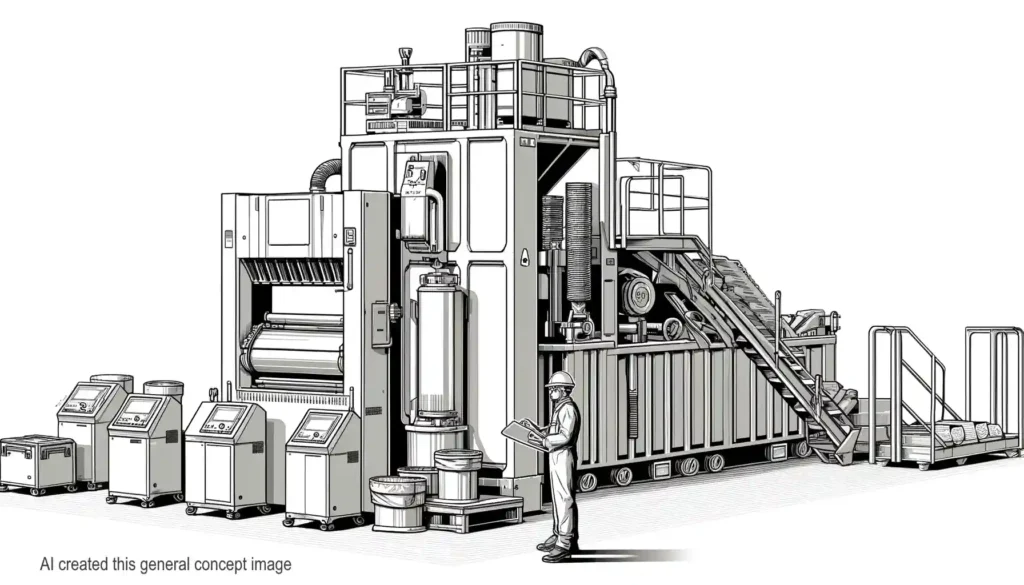HACCP Plan for Food Waste Management is all about how to treat food waste legally and safely, using depackaging and separation processes, for animal feed production using a HACCP plan.
In today’s world, effective waste management and food safety are paramount, especially when converting waste food into animal feed. One of the most reliable methods to ensure safety and compliance in this process is by implementing an HACCP (Hazard Analysis and Critical Control Points) plan. This guide will take you through the essentials of an HACCP plan, its importance, and how it can be utilized specifically for processing waste food through depackaging and separation for animal feed production.
The Importance of an HACCP Plan for Processing Waste Food
An HACCP plan is a systematic approach to identifying, evaluating, and controlling food safety hazards. For small business owners and food processing professionals, an HACCP plan is crucial for several reasons:
Ensures Safety: It helps in identifying potential hazards and implementing control measures to prevent contamination.
Compliance: Adheres to regulatory requirements and industry standards.
Reputation: Enhances customer trust by ensuring safe and high-quality products.
Efficiency: Streamlines processes and reduces waste.

Key Principles of an HACCP Plan
Implementing an HACCP plan involves seven key principles:
1. Conduct a Hazard Analysis
Identify potential biological, chemical, and physical hazards in the depackaging and separation process. For instance, contamination from packaging materials or microbial growth in waste food.
2. Determine Critical Control Points (CCPs)
Identify points in the process where control measures can be applied to prevent or eliminate hazards. An example is the point where waste food is separated from packaging, ensuring no contaminants are transferred.
3. Establish Critical Limits
Set maximum or minimum limits for temperature, pH, or other parameters to control hazards at each CCP. For example, setting a temperature limit for storing waste food to prevent microbial growth.
4. Implement Monitoring Procedures
Develop procedures to regularly check that critical limits are being met. This can include temperature logs, visual inspections, and microbial testing.
5. Establish Corrective Actions
Define steps to be taken when monitoring indicates a deviation from critical limits. For instance, if a temperature breach occurs, the affected batch should be isolated and tested.
6. Verification Procedures
Ensure that the HACCP plan is working effectively through regular reviews, audits, and validation of control measures.
7. Record-Keeping and Documentation
Maintain comprehensive records of hazard analyses, CCP monitoring, corrective actions, and verification activities to demonstrate compliance and facilitate traceability.
Implementing an HACCP Plan for Waste Food Processing
To effectively apply an HACCP plan in waste food processing for animal feed production, follow these steps:
1. Identify Potential Hazards
Evaluate the waste food sources, packaging materials, and potential contaminants. Use data and research to understand common hazards, such as plastic fragments from packaging or mycotoxins in spoiled food.
2. Determine Critical Control Points
In the depackaging and separation process, key CCPs could include the initial sorting of waste food, the depackaging machine, and the final separation of food from packaging.
3. Establish Critical Limits
Set specific criteria for each CCP. For example, establish a maximum allowable temperature for storing waste food before processing and specific mechanical settings for the depackaging machine to avoid contamination.
4. Implement Monitoring Procedures
Regularly check that critical limits are being met. Implement temperature monitoring systems, conduct visual inspections for contaminants, and perform regular microbial testing on processed feed.
5. Establish Corrective Actions
Define actions to take when deviations occur. If a batch exceeds the temperature limit, isolate and test the batch for safety before further processing.
6. Verification Procedures
Regularly review and validate the HACCP plan. Conduct audits, review monitoring records, and test samples of the final product to ensure compliance with safety standards.
7. Record-Keeping and Documentation
Maintain detailed records of all HACCP activities. Document hazard analyses, CCP monitoring results, corrective actions taken, and verification activities to ensure traceability and compliance.
Benefits of Implementing an HACCP Plan for Processing Waste Food
By adopting an HACCP plan, small business owners and food processing professionals can expect several benefits:
Enhanced Safety: Reduces the risk of contamination and ensures the production of safe animal feed.
Regulatory Compliance: Meets legal and industry standards, avoiding potential fines and legal issues.
Operational Efficiency: Streamlines processes, reduces waste, and improves overall productivity.
Customer Trust: Builds a reputation for producing safe, high-quality products, leading to increased customer loyalty.
Essential Requirements for Food Processing Businesses in England
Starting and operating a food processing business in England involves adhering to specific regulations to ensure food safety, quality, and consumer protection. Here are the key requirements that all food processing businesses must meet:
1. Registration and Approval
Registration with Local Authority
All food businesses must register with their local authority at least 28 days before starting operations. This includes food processing businesses. Registration is mandatory and free of charge, and failure to register can result in penalties.
Approval for Specific Products
Certain types of food businesses that handle meat, dairy, or fish products may need to be approved by the local authority or the Food Standards Agency (FSA). Approval involves a detailed inspection and compliance with stricter regulations.
2. Food Safety Management System
Hazard Analysis and Critical Control Points (HACCP)
Every food processing business must implement a HACCP plan. This involves identifying potential hazards, establishing control measures, and monitoring procedures to ensure food safety.
Food Safety Training
All employees must receive appropriate food safety training. The level of training depends on their role and responsibilities within the business.
3. Premises and Equipment Standards
Hygiene Standards
The premises and equipment used in food processing must meet strict hygiene standards. This includes proper layout, cleanable surfaces, adequate ventilation, and pest control measures.
Maintenance and Cleaning
Regular maintenance and cleaning schedules must be established to ensure the premises and equipment remain in a hygienic condition.
4. Labelling and Traceability
Food Labelling Regulations
All processed food products must comply with food labelling regulations. This includes providing clear information about ingredients, allergens, nutritional information, and expiration dates.
Traceability
Food businesses must have systems in place to trace their products throughout the supply chain. This is crucial for managing recalls and ensuring product safety.
5. Waste Management
Disposal of Waste
Food processing businesses must have appropriate systems for the disposal of food waste and other by-products. This includes ensuring waste is disposed of in a hygienic and environmentally friendly manner.
6. Health and Safety Requirements
Risk Assessments
Conduct regular risk assessments to identify and mitigate potential health and safety hazards in the workplace. This is crucial for protecting employees and ensuring a safe working environment.
Accident Reporting
Maintain records of any accidents or incidents and report them as required by health and safety regulations.
7. Allergen Management
Allergen Control Procedures
Implement strict procedures to manage allergens in the food processing environment. This includes preventing cross-contamination and ensuring accurate labelling of allergenic ingredients.
8. Regular Inspections and Compliance
Inspections by Local Authority
Expect regular inspections by the local authority to ensure compliance with food safety regulations. Being prepared and maintaining high standards can help avoid penalties and ensure ongoing approval.
By following these guidelines, food processing businesses in England can ensure they meet all necessary regulatory requirements, providing safe and high-quality products to their consumers.
Conclusion
Implementing an HACCP plan for processing waste food through depackaging and separation for animal feed production is essential for ensuring safety, compliance, and efficiency. By following the key principles and steps outlined in this guide, small business owners and food processing professionals can effectively manage potential hazards, meet regulatory requirements, and produce safe, high-quality animal feed.
Adhering to these requirements is crucial for the successful operation of a food processing business in the UK, England. By ensuring compliance with registration, food safety management, hygiene standards, labelling, waste management, health and safety, allergen management, and regular inspections, businesses can maintain high standards and protect consumer health. For detailed guidance and support, consult the Food Standards Agency and local authority resources.
The benefits of an HACCP plan are clear, and its implementation is a critical step towards sustainable and responsible waste food processing.
FAQS About HACCP Plans for Processing Waste Food Into Animal Feed
What is a HACCP Plan?
Understanding the significance of HACCP in food safety and its importance in managing food waste.
Why is a HACCP Plan Necessary for Food Waste Management?
Exploring how a HACCP plan can help in reducing food waste and the benefits of having a structured plan in place.
How to Develop a HACCP Plan for Food Waste Management?
A step-by-step guide on creating a HACCP plan specifically for managing food waste and the importance of involving all stakeholders in the process.
What are the Key Components of a HACCP Plan for Animal Feed Food Waste Management?
Detailed explanation of the key components that should be included in a HACCP plan and the importance of monitoring and documenting processes for effective waste management.
How to Implement and Monitor a HACCP Plan for Food Waste Management?
Tips on effectively implementing and monitoring a HACCP plan for food waste management and the importance of regular audits and reviews.
What are the Common Challenges in Implementing a HACCP Plan for Food Waste Management?
Discussion on the common challenges faced by organizations when implementing a HACCP plan and strategies for overcoming these challenges.
How Can Our Company Help You Develop a HACCP Plan for Food Waste Management?
Information on how your company can assist in developing a customized HACCP plan for food waste management and the benefits of partnering with us for your waste management needs.
Discover more from IPPTS Depackaging Equipment Insights
Subscribe to get the latest posts sent to your email.







